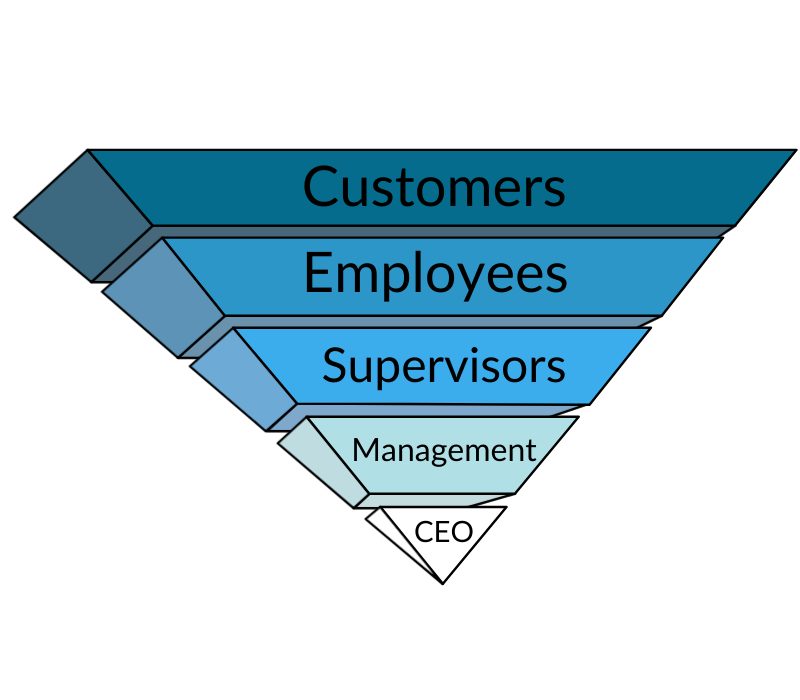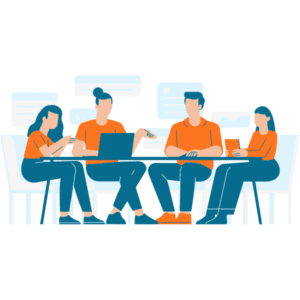When it comes to workforce management, an area that is often overlooked is employee empowerment. An important step in being an effective leader is giving your employees the freedom and resources to feel empowered to take their contributions to the next level. Helping your employees do their jobs without micromanagement can bring a wide range of benefits to you and your organization.
What is Employee Empowerment?
According to ASQ, employee empowerment is a condition whereby employees have the authority to make decisions and take action in their work areas, within stated bounds, without prior approval. Essentially, it means providing employees with the means to make important decisions and helping to ensure those decisions are correct.
There are two main concepts within employee empowerment;
Job enlargement: involves expanding the scope of a role to include a greater portion of the horizontal process.
Job enrichment: involves increasing the depth of the job to include responsibilities that have previously been carried out by more senior employees.
As you can imagine, these concepts can’t happen without input from managers and leaders. It also requires;
Training in the skills necessary to carry out the additional responsibilities.
Access to the information that is required to make informed decisions
Initiative and confidence from the employee, to show that they can take on greater responsibility.
How does employee empowerment affect organizational structure?
As you can imagine, adjusting the role of your employees calls for a shift in how your organization is structured. This reduces the levels of hierarchy and can provide a more customer/process-focused organization. Generally, employee empowerment is viewed as an inverted triangle of organizational power. While the traditional structure places management at the top and customers at the bottom, employee empowerment sees management take on a support role at the bottom.
While these structural changes can be challenging to adapt to at first, the benefits that can be seen in the long run are not to be overlooked.
The Advantages of Employee Empowerment
Below, we break down the advantages of developing a culture of employee empowerment in your organization.
Improved Speed of Problem Solving
Your employees are the ones on the ground, meaning they are the closest to your organization’s most common issues and problems. Giving them the authority and resources to handle these problems without input from management means response times will decrease. When faced with a problem, those close to it (your employees) are more familiar with it and have a definitive reason to find an effective solution rapidly.
Empowered employees know that solving these problems will aid their work, make life easier, and allow them to be more productive. Take this in comparison to executives or senior managers, who are often removed from work. This means they have a fundamental lack of knowledge and desire required for the solution-finding process.
Increased Employee Engagement
In previous blogs around employee engagement, we’ve discussed how increased autonomy is essential. Autonomy is a huge part of employee empowerment. Those that have been given autonomy to make their own decisions feel trusted, and that their contributions are essential to the success of the business. Mutual trust between leaders, employees and team members is a big driver of employee engagement.
A study from Forbes, of over 7,000 employees further backs this up. It showed that those who felt disempowered were rated in the 24th percentile of engagement, while those with a high level of empowerment came in at the 79th percentile. It’s simple, when your employees feel empowered, they are driven to succeed.
Enhanced Productivity 
Employee empowerment means removing continual oversight from a manager or supervisor. As soon as this is removed, the artificial obstacles to the progress of tasks are also removed. Employees no longer need approval from management to move from one stage of a task to the next, allowing them to work much faster.
Employees feel a renewed sense of responsibility when management delegate responsibilities, which generally leads to improved processes, and with that, productivity. As we have discussed before, when productivity improves, so does profitability per employee, which is great for your organization’s bottom line.
Lower Stress Levels for Management
Empowering your employees with responsibility relieves your managers of unnecessary stress and strain. This, in turn, frees them up to focus on strategy and big-picture items. Rather than being bogged down with day-to-day decision-making, management resources are focused on growing the business, and improving processes and professional development. Again, this is likely to improve your bottom line and improve your organization as a whole.
Improved Staff Retention
Linked to the enhanced employee engagement that comes with employee empowerment, it also leads to greater satisfaction in the workplace. A study published in the American Review of Public Administration has shown that common employee empowerment practices have a positive, and sizeable impact on employee satisfaction. It goes without saying that those who have high job satisfaction are less likely to change jobs. We’ve broken down the costs and other issues that come with poor employee retention, which highlights how much employee empowerment is truly worth.
How to achieve Employee Empowerment
Okay, so you’ve seen what employee empowerment is all about, and how it can help your business. Now, you might be wondering how you can actually achieve it, and create a culture of employee empowerment within your organization. While this will differ depending on your business, and your industry, there are a number of steps that you can take to start empowering your employees.
Build Trust and Respect 
The first step to empowering your employees is fostering a culture where they feel respected and trusted. The attitude of management is a crucial part of the process and is the ideal place to start the process. Empowerment is a continuous process and requires nurturing your employees from the off-set.
Providing your employees with high levels of trust allows them to share both their struggles and their achievements. This, in turn, helps them reach their full potential, and thrive as individuals within their teams. It also gives an overall boost to morale!
Encourage Communication
Robust, open communication is crucial to employee empowerment. In a traditional hierarchal organizational structure, employees are often the last to know about the latest developments in the company. When it comes to employee empowerment, you will want to avoid this, through open and honest communication. It should become the norm for managers to share information with employees, which will create an inclusive and empowering environment for them.
On the other side of the coin, communication should go both ways. Allowing employees to voice opinions on important decisions to managers who will actively listen is equally as important. As mentioned above, when employees feel heard and valued within the organization, their morale, and ultimately their sense of empowerment will increase.
Clear Company Core Values & Goals
It’s one thing for a company to have values and goals, however, aligning daily practices with them is where it really starts to take shape. Regular reviews and reminders of core goals and values with employees are crucial to the idea of employee empowerment. Show employees how they can contribute to the company’s goals, and ensure that managers are adhering to the values that have been outlined every day.
When it is clear to employees what the organizational goals are, and how they can contribute, they will adjust their own daily actions to align with them. This will have tremendous positive impacts on the organization and ultimately allow you to achieve goals more efficiently. Over time, empowerment will become part of your organizational culture.
Provide Tools and Resources
While this one may seem obvious, employees will never reach their full potential without the right tools and resources. If you want to empower them, you must provide them with the tools they need to grow and develop professionally. This will look different for every organization based on their industry, budgets, and other factors.
As a manager or business owner, put yourself in the shoes of the employees on the ground. Consider what might be helpful to allow them to go above and beyond. For some, it might be skill development and education, for others, it might be adopting new technology to improve processes. Establish an annual budget for employee empowerment, where you ensure your employees are well equipped.
Once this has been achieved, both the employees and the organization itself are better prepared for future obstacles. Not only that, but you create an empowering work environment.
Offer Feedback and Rewards
Your role as a leader when it comes to employee empowerment. A large part of that should consist of offering regular, individual feedback. Empowerment, at the most basic level, is about supporting and guiding your employees through their professional journey.
As you can imagine, this helps with both growth and success. Ensure that you are offering constructive feedback, helpful suggestions, and regular words of encouragement to your employees.
With this feedback, a great way to empower your employees is to offer recognition and rewards for their achievements. Genuine recognition from management is a proven way to bolster the confidence of employees. Of course, confidence is a fundamental building block for empowerment.
Provide Flexibility
Finally, providing flexibility in the workplace is a great way to empower your employees. Not only does it reinforce the trust and respect you have for your employees, but it also gives them further autonomy to choose how or when they work. One of the easiest way to provide flexibility in the workplace is through your employee scheduling processes. There are levels to the flexibility you can provide with flexible schedule, starting with availability, then going to shift bidding, and on to self scheduling. Using employee scheduling software like Celayix makes all of these flexible scheduling options easy and accessible.
Our availability feature allows your employees to highlight their availability to work through the employee mobile app. This data can then be used in our autofill and rules scheduling tools which will fill your schedule with available staff! Shift bidding works by allowing your employees to express interest in open shifts. The assignment of the shift is down to the scheduler, who can choose from those who have bid on it. Finally, self-scheduling gives your employees total autonomy over their schedule. Employees can claim open shifts on a first-come-first-served basis. Schedulers can use this method to fill their entire schedule, or use a split of open and assigned shift to ensure basic coverage. With Celayix, schedulers can rest assured that employees can only self-schedule themselves into shifts that they are qualified for!
Employee empowerment will not happen overnight and needs to start from the top down. The sooner you start, the sooner you and your organization will reap the rewards. While it may feel like a big change to make, starting small is better than not starting at all. One of the most effective ways to get started with employee empowerment is to simply let your employees know that they matter.
Start today by showing them that their empowerment is your priority.











